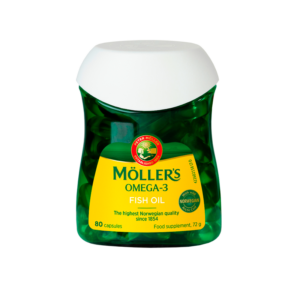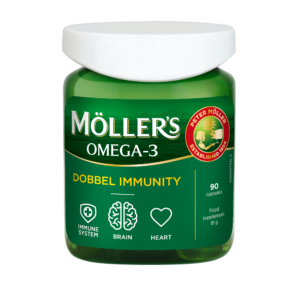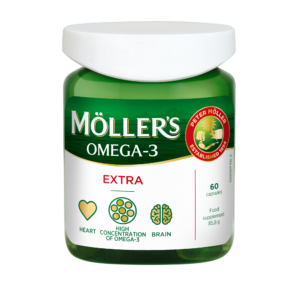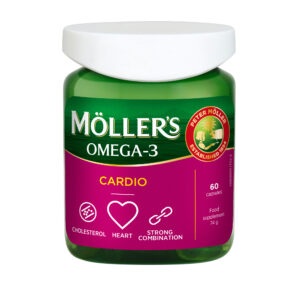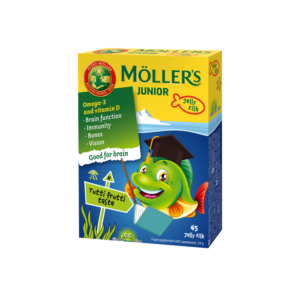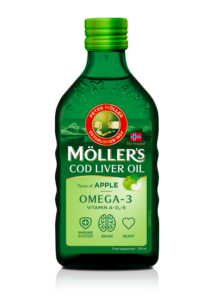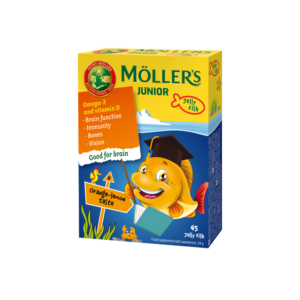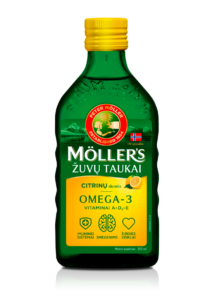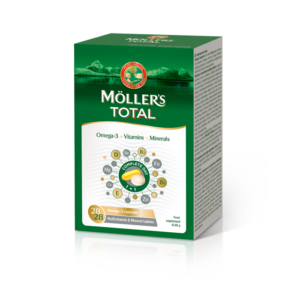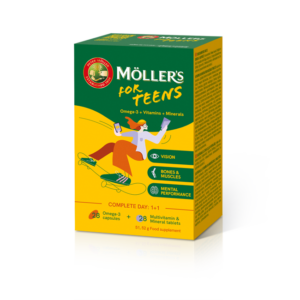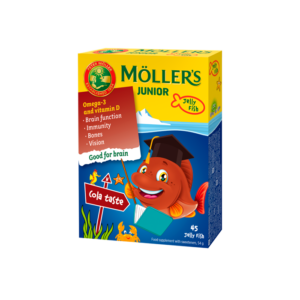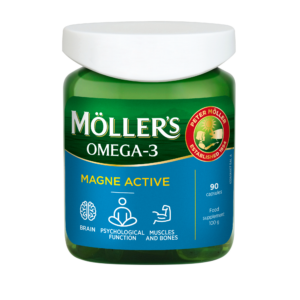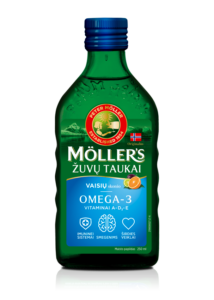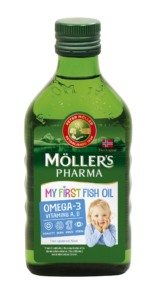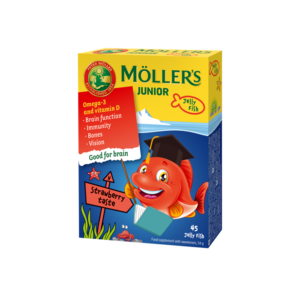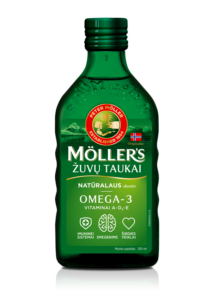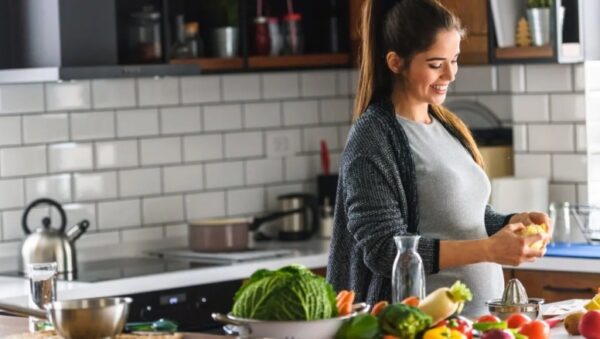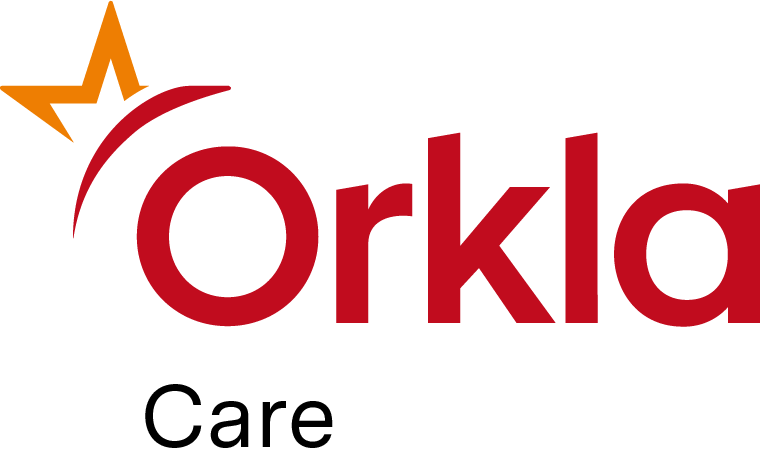Home » 5 kokteiliai prieš ir po treniruotės
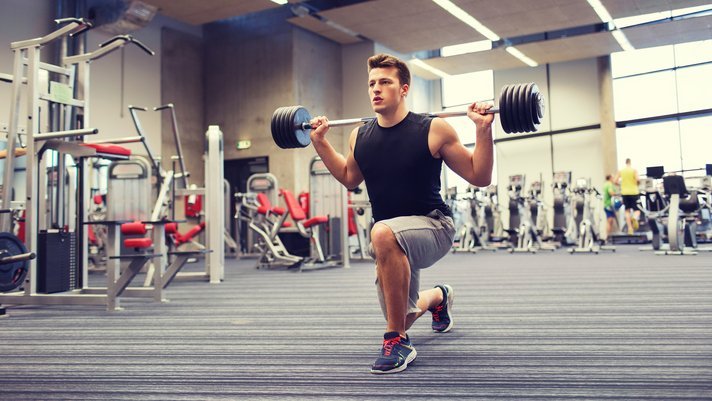
Prieš treniruotę
– Prieš treniruotę gerai suvartoti šiek tiek angliavandenių, – sako „Orkla Health“ mitybos padalinio vadovė Helena Dominguez.
Angliavandeniai suteikia energijos ne tik treniruotės pradžiai, bet ir visos treniruotės metu. Jei valgote šaldytas uogas ir vaisius, gaunate ir fruktozės, ir ląstelienos. Jei norite, kokteilį galite pagardinti ir vaisių sultimis, kokosų cukrumi, medaus ar agavos sirupu. Visa tai suteiks jums greitos energijos.
– Tačiau nepadauginkite, nes tai gali sukelti pilvo skausmus fizinio krūvio metu, – perspėja specialistė.
Labai tinkamas angliavandenių pavyzdys yra avižiniai dribsniai. Trintuve susmulkinkite juos mažesniais gabaliukais prieš dedant į kokteilį.
Kriaušės smūgis
- ½ kriaušės
- 1 šaldytas bananas
- 4 šaukštai smulkintų avižinių dribsnių
- 1 šaukštas Möller`s žuvų taukų
- 1 puodelis obuolių sulčių

Kokteilis su kofeinu
- 1 šaldytas bananas
- 1 šaukštas tirpios kavos
- 4 šaukštai smulkintų avižinių dribsnių
- 1 šaukštas Möller`s žuvų taukų
- 200 ml kokoso pieno
Sutrinkite visus ingredientus galinga trintuve. Galite papildomai įpilti vandens,
kad kokteilio konsistencija primintų trintą sriubą. Taip suvartosite daugiau organizmui reikalingų skysčių.
– Išgerkite kokteilį likus 30 min. iki treniruotės, – rekomenduoja Helena. Jei kokteilis išėjo labai skystas, jį galite gerti ir visos treniruotės metu.
Po treniruotės
– Angliavandeniai ir baltymai, pageidautina santykiu 2: 1, yra svarbūs maistinių medžiagų atkūrimui po treniruotės, – aiškina mitybos specialistė.
Angliavandenius gauname iš uogų ir vaisių, medaus ir sirupų, taip pat ir iš krakmolingų daržovių, pavyzdžiui, morkų.
– Grūsti linų sėmenys – gausus baltymų šaltinis. Juose taip pat yra sveikų riebalų (polinesočiųjų riebalų rūgščių) ir daug skaidulų. Varškėje ir jos produktuose taip pat daug baltymų. Taip pat galite rinktis avinžirnius ir rudas pupeles, kurios turtingos angliavandenių ir baltymų, pataria H. Dominguez.
Žalia jėga
- ½ avokado
- 1 kriaušė
- ½ banano, geriau šaldyto
- 10 migdolų
- 1 šaukštas linų sėmenų
- 2 šaukštai liesos varškės
- 1 šaukštas Möller`s žuvų taukų
- 1 puodelis obuolių sulčių

Saldusis mango
- 1 mangas
- 1 morka
- 2 šaukštai linų sėmenų
- 10 lazdynų riešutų
- 100 g varškės
- 1 šaukštas Möller`s žuvų taukų
- ½ puodelio vandens
Baltymų bomba
- 8 supjaustytos kaliaropės
- 12 mėlynių
- 1 žalias kiaušinis
- 1 šaukštas linų sėmenų
- 1 šaukštas liesos varškės
- 1 arbatinis šaukštelis medaus
- 1 puodelis vandens
- 1 šaukštas Möller`s žuvų taukų
Naudingas patarimas! Kai bananai paruduoja, neskubėkite jų išmesti. Nulupkite, supjaustykite gabalėliais ir užšaldykite.
What is good health?
Do you have a good lifestyle?
Lifestyle simply means the way in which you live. Health and lifestyle go hand in hand. You might feel you have a good lifestyle if you are physically active, eat healthily and generally experience a sense of wellbeing. Conversely, if you want good health you should also have a good lifestyle.
Physical activity is the major contributor to a good lifestyle, but diet, drugs, stress, sleep and social conditions are also play an important role. Being able to use the body properly to avoid injury also affects lifestyle. Physical activity can also prevent depression and help you to recover more quickly from mental illness, both of which obviously affect your lifestyle.
Diet can be a difficult topic for many. Perhaps you eat too much or too little or maybe you find it hard to know what foods to combine to have a balanced diet. It’s also important to eat food that contains important vitamins, minerals and dietary fibre, omega-3 and antioxidants. On top of all this, you also need to get enough energy, protein and the correct fatty acids. The requirement for these nutrients changes throughout your life. When you are older you also have different requirements than children and younger adults. Women also have different requirements than men. Pregnant and breastfeeding mothers also have special requirements.
When you get older, you lose muscle mass and your body requires less energy and therefore less food. You may lead a less active life than you did before, which is why you require less food. However, your need for minerals, vitamins and other nutrients remains the same. Of course, there are plenty of healthy and active older people, but when you reach 70 to 80 years of age, it’s easier to become ill, especially during flu season.
Some steps you can take to improve your lifestyle and health are to:
- eat a healthy and varied diet
- stay active
- watch your weight
- avoid too much alcohol and don’t smoke
- get enough sleep
- think positive
- practise good hygiene
What is good quality of life?
The World Health Organisation (WHO) defines quality of life as a state where the individual can realise their potential, cope with normal stressful situations, work in a rewarding and positive way, and be able to contribute to others and society.
Quality of life is a wide and somewhat diffuse concept that includes joy in, and a desire for, life. These are values that are rather felt than measured, which in turn are based on personal environment and choices. Quality of life doesn’t necessarily depend on being healthy or sick. It’s the moments between worries, sorrows, problems and ailments that matter. For example, if you have a chronic illness, a feeling of mastery can be important when talking about quality of life.
To sum up, quality of life is a combination of health, lifestyle, networks and social support. It’s about experiencing joy, meaning in life, satisfaction, security and a sense of belonging, as well as being able to use your strengths. It’s also about feeling interest in life, coping with everyday situations and a being committed to something or someone. If you have good quality of life, you will be able to cope better with the inevitable stressful situations in life.
Produktai:
-
Möller‘s žuvų taukai, 80 kapsulių
-
Möller‘s Dobbel Immunity, vanilės skonio, 90 kapsulių
-
Möller‘s Omega-3 Extra, 60 kapsulės
„Möller’s Omega-3 Ekstra“ – atnaujintos dar didesnės koncentracijos natūralios žuvinės kilmės omega-3!
-
Möller‘s Omega-3 Cardio, 60 kapsulės
-
Möller’s Strong D Vitamin, 60 kapsulių
-
Möller’s Junior Omega-3, vaisių skonio, 45 kramtomos žuvelės
-
Möller’s žuvų taukai, obuolių skonio, 250ml
-
Möller’s Junior Omega-3, apelsinų ir citrinų skonio, 45 kramtomos žuvelės
-
Möller‘s citrinų skonio žuvų taukai, 250 ml
-
Möller‘s Total – Omega-3, vitaminų ir mineralų kompleksas, 28 kapsulės ir 28 tabletės
-
„Möller‘s for Teens“ omega-3 ir vitaminų bei mineralų kompleksas paaugliams, 28 kaps x 28 tabl
-
Möller’s Junior Omega-3, kolos skonio, 45 kramtomos žuvelės
Kramtomos kolos skonio žuvelės su omega-3 ir vitaminu D3. Švelnios ir minkštos tekstūros maisto papildai visavertei vaikų mitybai.
-
Möller‘s Omega-3 Magne Active, 90 kapsulių
-
Möller‘s žuvų taukai, vaisių skonio, 250 ml
-
Möller‘s mano pirmieji žuvų taukai, 250 ml
-
Möller’s Junior Omega-3, braškių skonio, 45 kramtomos žuvelės
-
Möller‘s žuvų taukai, natūralaus skonio, 250 ml
„Möller’s“ skysti žuvų taukai – tradicinis būdas pasirūpinti savimi!
Sužinoti daugiau
Padėkite, aš močiutė!
sveiki kaulai vyresniems
Laukiatės vaikelio? Omega-3 riebalų rūgštys jums ypač svarbios
smegenys vyresniems
Koks ryšys tarp sveikos gyvensenos ir gyvenimo kokybės?
menkių kepenų aliejus vyresniems
Pasisemkite įkvėpimo mūsų Instagram
This error message is only visible to WordPress admins
Error: Access Token is not valid or has expired. Feed will not update.
